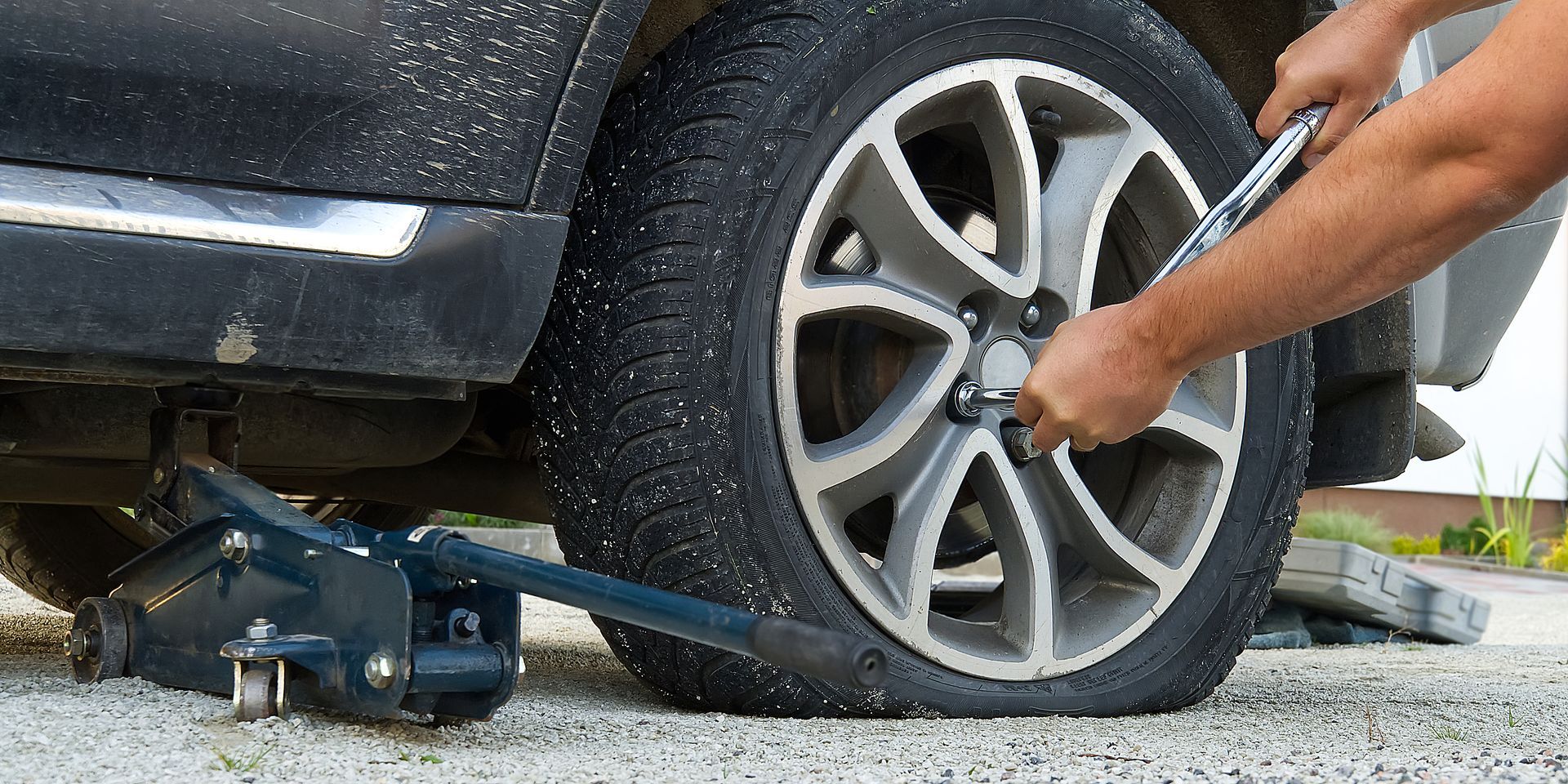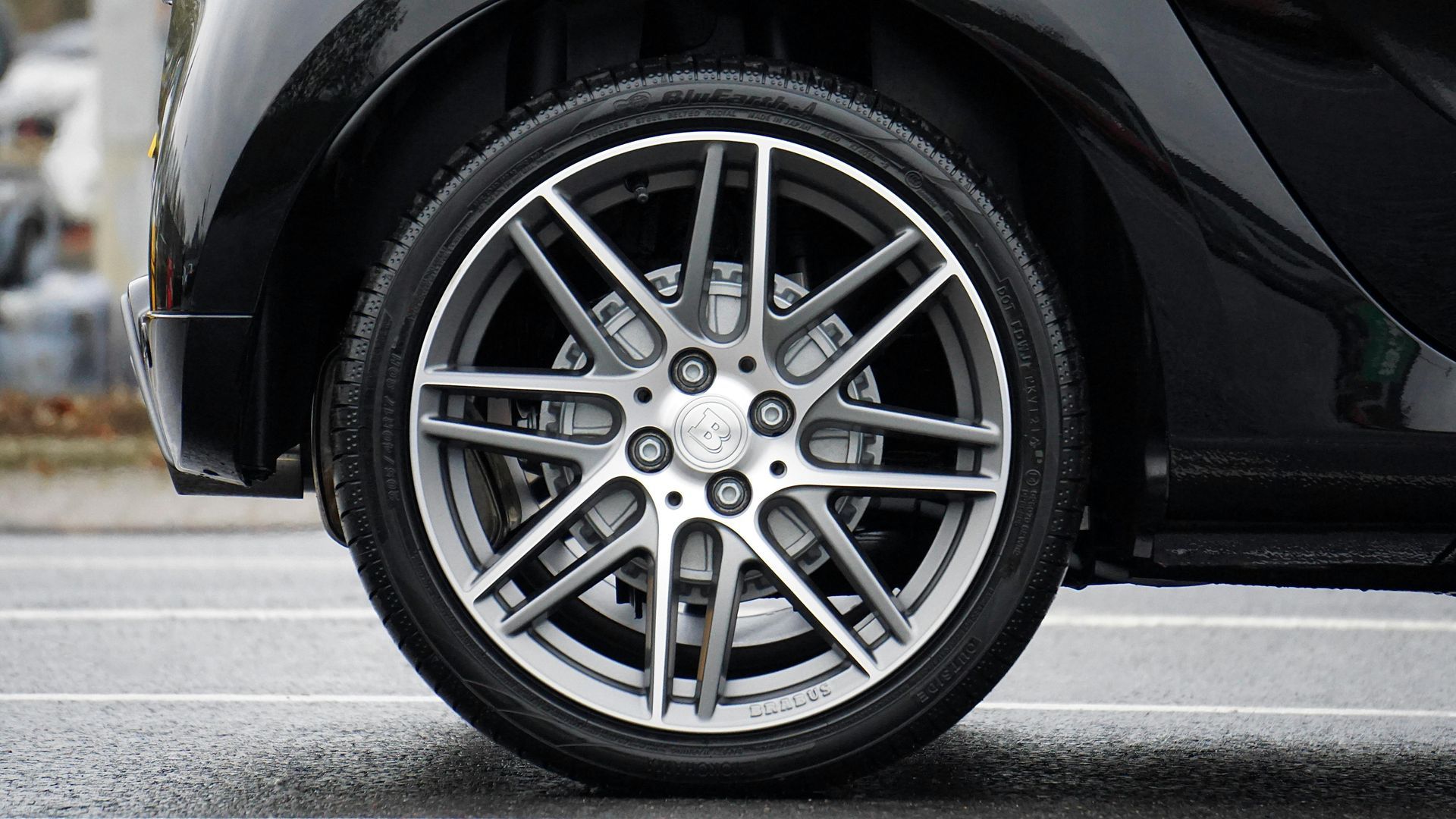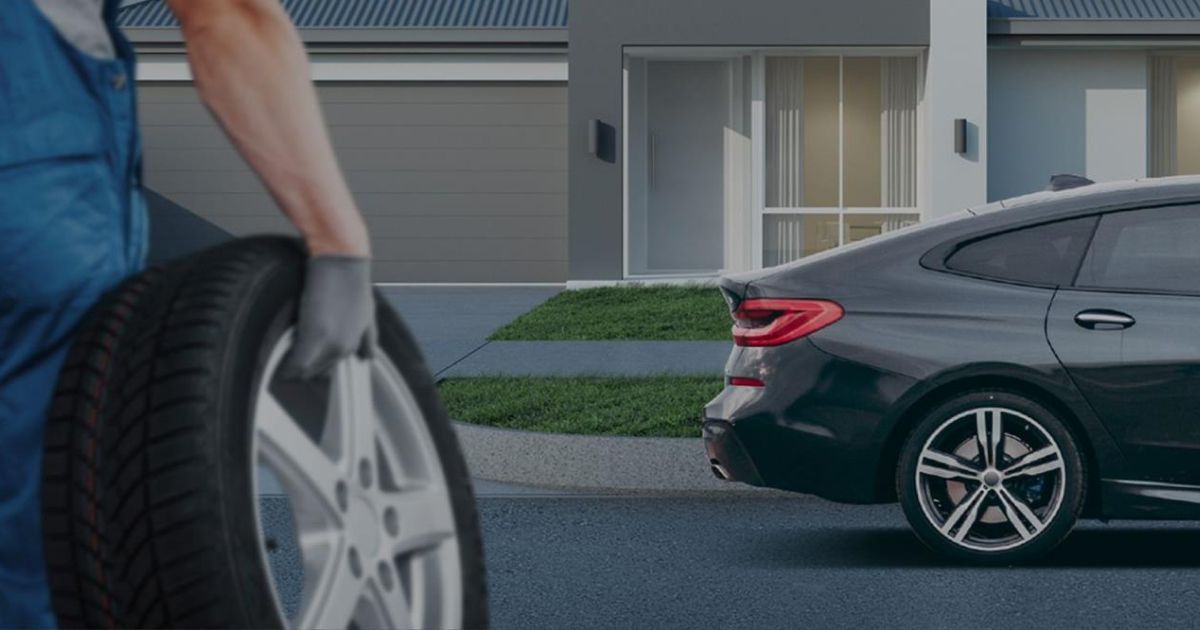When faced with a damaged tire, it's essential to consider whether repairing or replacing it is the best course of action. Making the right decision is crucial for the safety and performance of your vehicle. In this article, we will explore the factors you should consider when deciding between tire repair and replacement, the pros and cons of each option, instances where replacement is necessary, the importance of consulting a professional, and proper tire care.
Key Takeaways:
- Patching a tire can be a cheaper option and can last for several years if done properly.
- Tire patching is suitable for punctures within the repair area and less than ¼ inch in diameter.
- Replacing a tire offers benefits such as increased traction, better performance, and increased safety.
- Instances where tire replacement is necessary include sidewall or shoulder punctures, punctures larger than ¼ inch, and excessive wear or cracks on the sidewall.
- Consulting a trained technician is advisable to assess the damage and recommend the best solution.
Factors to consider when deciding
Several factors must be taken into account before deciding whether to repair or replace a damaged tire. Patching a tire is often a more cost-effective option and can extend the lifespan of the tire if done correctly. This method is suitable for patchable punctures within the repair area, typically less than ¼ inch in diameter. However, it's important to note that tire patching can only be done once, and it carries a higher safety risk compared to replacing the tire.
On the other hand, replacing a tire offers several advantages. It provides increased traction, improves overall performance, and enhances safety on the road. However, it's worth considering that tire replacement is usually more expensive, and replacing only one tire can result in uneven wear, affecting the vehicle's stability and handling.
Instances where tire replacement is necessary include sidewall or shoulder punctures, punctures larger than ¼ inch, punctures adjacent to previously repaired damage, thin tire tread depth , and excessive wear or cracks on the sidewall. It's important to note that serious tire damage resulting from a crash or a bubble in the sidewall should always be addressed by replacing the tire. Additionally, temporary fixes like sealants or emergency inflators are not recommended for long-term use.
Table: Factors to Consider When Deciding
| Repair | Replace |
|---|---|
| Cost-effective | Increased traction |
| Can last several years | Better performance |
| Only suitable for certain punctures | More expensive |
| High safety risk | Potential for uneven wear |
Ultimately, it is crucial to consult a trained tire technician to assess the damage and recommend the best solution. Tire repairs must be done correctly to ensure the safety and durability of the tire, and a professional can provide the expertise needed to make an informed decision. By considering the various factors involved, you can determine whether to repair or replace a damaged tire for optimal vehicle performance and safety.
Pros and Cons of Tire Repair
Repairing a tire through patching offers certain advantages and disadvantages that should be carefully weighed. Patching a tire is often a more cost-effective option compared to tire replacement, making it an attractive choice for those looking to save money. When done properly, a well-patched tire can last for several years, providing extended use and value.
However, it is important to consider the limitations of tire patching. Patching is suitable for punctures within the repair area and those that are less than ¼ inch in diameter. Attempting to patch a tire with larger punctures or damage outside the repair area is not recommended, as it may compromise the structural integrity and safety of the tire. Additionally, it is essential to recognize that tire patching can only be done once. If a patched tire sustains further damage, it cannot be patched again and must be replaced.
Furthermore, safety considerations should be taken into account when deciding whether to repair or replace a tire. Patching a tire carries a higher safety risk compared to replacing it entirely. Although a well-patched tire can provide adequate performance, it may not offer the same level of reliability and stability as a new tire. It is important to assess the severity of the damage and consider the potential consequences of choosing to repair a tire instead of replacing it.
Pros and Cons of Tire Repair
| Pros | Cons |
|---|---|
| Cost-effective option | Higher safety risk |
| Prolongs tire lifespan | Limited to one patching |
In conclusion, when considering whether to repair or replace a tire, it is essential to evaluate the advantages and disadvantages of tire patching. While patching can offer potential cost savings and extend the lifespan of a tire, it is important to consider the safety risks and limitations associated with this method. Ultimately, consulting a trained technician is advisable to assess the damage and make an informed decision that prioritizes tire safety and durability.
Advantages of Tire Replacement
Opting for tire replacement comes with significant advantages, including enhanced performance and safety. When a tire is replaced, it offers improved traction, allowing for better control and handling on the road. This is especially crucial during inclement weather conditions, where having reliable grip is essential for avoiding accidents.
Furthermore, replacing a tire ensures better overall performance. Worn-out tires can negatively impact your vehicle's fuel efficiency and handling, resulting in a less comfortable and smooth ride. By installing new tires, you can restore optimal performance and enjoy a more enjoyable driving experience.
Safety is another key advantage of tire replacement. Over time, tires can become worn, leading to reduced tread depth and compromised grip. This can increase the risk of accidents, especially in wet or slippery conditions. By replacing worn tires, you can ensure that your vehicle maintains a strong grip on the road, minimizing the chances of skidding or losing control.
Proper Tire Maintenance
It's important to note that tire replacement should go hand in hand with proper tire maintenance. Regularly checking your tires for wear and tear, monitoring tread depth, and ensuring proper tire inflation are crucial for extending the lifespan of your tires and maximizing their performance.
Additionally, adhering to recommended tire maintenance practices such as regular tire rotations and alignments can help promote even wear and prolong the life of your tires. Consulting a trained technician for professional advice on tire care and maintenance is highly recommended to ensure optimal safety and durability.
Summary
When it comes to deciding whether to repair or replace a tire, it's essential to consider the advantages offered by tire replacement. Replacing a tire provides enhanced performance, better traction, and increased safety. However, it is crucial to prioritize proper tire maintenance to maximize the benefits of tire replacement and ensure long-lasting durability. Consulting a trained technician for advice on tire care and making informed decisions regarding repair or replacement will help keep your vehicle safe and performing at its best.
| Advantages of Tire Replacement |
|---|
| Enhanced performance |
| Improved traction |
| Increased safety |
Instances where replacement is necessary
There are certain situations where tire replacement becomes the only viable solution. Punctures on the sidewall or shoulders, punctures larger than ¼ inch, and punctures adjacent to previously repaired damage are all instances where tire repair is not suitable. Additionally, thin tread depth and excessive wear or cracks on the sidewall are indications that a tire should be replaced.
When it comes to sidewall or shoulder punctures, the structural integrity of the tire can be compromised, making it unsafe to repair. Punctures that are larger than ¼ inch in diameter may also cause irreversible damage to the tire, making it necessary to replace it. It is important to note that punctures adjacent to previously repaired damage cannot be fixed, as it can weaken the tire and pose a safety risk.
Furthermore, thin tread depth and excessive wear or cracks on the sidewall can significantly impact the tire's performance and safety. Tires with worn-out treads or cracks on the sidewall are more prone to blowouts and are no longer able to provide adequate traction on the road. In such cases, replacing the tire is the best course of action to ensure optimal safety and performance.
| When to replace a tire | When to repair a tire |
|---|---|
| Punctures on sidewall or shoulders | Punctures within repair area and less than ¼ inch in diameter |
| Punctures larger than ¼ inch | |
| Punctures adjacent to previously repaired damage | |
| Thin tread depth | |
| Excessive wear or cracks on the sidewall |
When faced with these instances, it is essential to prioritize safety and opt for tire replacement. Consulting a trained technician is highly recommended to assess the damage accurately and provide professional advice. They can determine whether tire repair is a viable option or if replacement is necessary to ensure the safety and durability of the tire.
Consulting a professional and proper tire care
To make an informed decision, it is crucial to consult a trained technician and take proper care of your tires. A trained professional can accurately assess the damage to your tire and provide expert advice on whether it can be safely repaired or needs to be replaced. Remember, your safety and the longevity of your tire depend on making the right choice.
Proper tire care is essential for maintaining tire safety and durability. Regularly inspect your tires for signs of wear, such as uneven tread wear or cracks on the sidewall. Check the tire pressure regularly and ensure it is at the recommended level. Underinflated or overinflated tires can affect performance and safety. Rotate your tires regularly to promote even wear and extend their lifespan.
Table: Tire Maintenance Checklist
| Task | Frequency |
|---|---|
| Inspect tires for wear and damage | Monthly |
| Check tire pressure | Monthly |
| Rotate tires | Every 5,000-8,000 miles |
| Replace tires when tread depth reaches 2/32 inch | As needed |
Additionally, avoid driving over potholes, curbs, or other road hazards that can cause tire damage. Be mindful of the load capacity of your vehicle and avoid overloading it, as this can put excessive strain on the tires. Finally, consider investing in high-quality tires that are designed for your specific vehicle and driving conditions.
By consulting a professional and practicing proper tire care, you can make informed decisions regarding the repair or replacement of your tires. Remember, your tires are crucial for your safety and the overall performance of your vehicle. Take the necessary steps to ensure their longevity and reliability.
Conclusion
When it comes to deciding whether to repair or replace a tire, careful consideration and professional advice are crucial to ensure both safety and performance. There are several factors to consider when making this decision.
Patching a tire is often a cheaper option and can last for several years if done properly. It is suitable for punctures within the repair area and less than ¼ inch in diameter. However, it's important to note that patching can only be done once and carries a higher safety risk compared to replacing the tire.
On the other hand, replacing a tire offers benefits such as increased traction, better performance, and increased safety. However, it is usually more expensive, and replacing only one tire can lead to uneven wear. There are instances where tire replacement is necessary, including punctures on the sidewall or shoulders, punctures larger than ¼ inch, punctures adjacent to previously repaired damage, thin tread depth, and excessive wear or cracks on the sidewall.
If the tire has sustained serious damage in a crash or has a bubble in the sidewall, it should be replaced instead of repaired. Additionally, using sealants or emergency inflators as temporary fixes is not recommended for long-term use.
Ultimately, it is advisable to consult a trained technician to assess the damage and recommend the best solution. Tire repairs should be done correctly to ensure the safety and durability of the tire.
FAQ
Should I repair my tire or replace it?
The decision to repair or replace a tire depends on several factors. It is best to consult a trained technician to assess the damage and recommend the appropriate solution.
What factors should I consider when deciding?
Factors to consider include the viability of tire patching, the lifespan of a repaired tire, tire wear , and tread depth. These factors can help determine whether a tire can be safely repaired or if replacement is necessary.
What are the pros and cons of tire repair?
Patching a tire is often a cheaper option, but it carries a higher safety risk compared to replacing the tire. Patching can only be done once and is suitable for punctures within the repair area and less than ¼ inch in diameter.
What are the advantages of tire replacement?
Tire replacement offers benefits such as increased traction, better performance, and increased safety. However, it can be more expensive, and replacing only one tire can lead to uneven wear. Proper tire maintenance is essential for maximizing these benefits.
When is tire replacement necessary?
Tire replacement is necessary in instances such as punctures on the sidewall or shoulders, punctures larger than ¼ inch, punctures adjacent to previously repaired damage, thin tread depth, and excessive wear or cracks on the sidewall. These conditions can compromise tire safety and performance.
Should I consult a professional for tire repairs?
Yes, it is advisable to consult a trained technician to assess the damage and recommend the best solution. Tire repairs should be done correctly to ensure the safety and durability of the tire. Proper tire care is also crucial for maintaining tire health.














